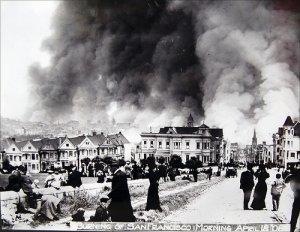We’ve seen it before. Social media can blow up a story for good or bad in a matter of minutes. When a story breaks, people are actively looking for answers. A whopping 75 percent of people using social media are information seekers, according to a Pew Internet study. They’re not lurkers, but 37 percent of social network users are also creating the news and posting it via Twitter, blogs, and Facebook posts. In a moment of crisis, the social networking community is driving the dialogue of our collective vision of the crisis.
Is that dialogue helping you or hurting you? If you’re not participating in the discussion, then you’ll have no say in the matter. Dealing with crisis communications over social media was one of the hot discussions at BlogWorld Expo in Las Vegas last week. I decided to cull all the conversations I had on the topic, especially the fantastic panel that discussed this, and put together a list of best practices. Here they are.
15 Tips for Handling a Public Relations Nightmare in Social Media
Always one up the issue that’s being played out – For example if there was a negative video by some surly employees, respond with a positive video from the CEO.
Don’t rely on just one platform – Utilize all the social media avenues available to you (e.g., blogs, Twitter, Facebook, YouTube). Increase your chance of visibility.
 Become the hub of the issue – Since you know that people are looking for information on a topic, become the hub of all information. Create a page where you post all stories on the issue, positive and negative. Bring in a Twitter feed and other real-time feeds of people talking about the issue. You’ll become the de facto source for all information on that topic. When you become the hub, you can’t control the conversation, but you can control the placement of the conversation on your page. Make sure your opinion is prominently seen.
Become the hub of the issue – Since you know that people are looking for information on a topic, become the hub of all information. Create a page where you post all stories on the issue, positive and negative. Bring in a Twitter feed and other real-time feeds of people talking about the issue. You’ll become the de facto source for all information on that topic. When you become the hub, you can’t control the conversation, but you can control the placement of the conversation on your page. Make sure your opinion is prominently seen.
Leave comments on – When you shut off comments it says a lot about the brand. Have a clearly stated blogging policy noting that you’ll take criticism, but not profanity.
Rely on your advocates and your allies – Tip of the hat to the old rules of crisis communications. The most trusted group are third party experts. Seek their opinion on the issue.
Act fast – First 24 hours of a crisis is when people are turning to each other for answers. Be ready to respond.
Have a preparedness plan in place – If you’re waiting for a crisis to bring your team together it’s going to be a mess. Community managers must be part of the crisis team. Employees should know how to react without approval from your CEO. The Internet is not waiting for your CEO’s response, and neither should you.
Don’t abandon your values – Adhere to your organization’s values in a crisis. It’s not a time to throw everything out the window.
Monitor real-time content to answer questions, not sentiment – So much of monitoring tools is to determine sentiment. If someone doesn’t like you, don’t leave it at that. Why are they angry and how can you fix it? Often the reason there’s negative sentiment is because they haven’t had their questions answered. Instead of drawing a chart that says “40 percent of users don’t like us” why not just answer the issue they’re having? Just saying, “We feel your pain” doesn’t solve a problem. Instead ask, “How can we solve your pain?”
Be clear about your limitations – Not every problem can be solved the way the community wants it. Explain that certain issues can’t be solved in that way. Look for other ways to mollify the audience.
 Speed to response is critical – Even if you don’t have the answer, acknowledging that you’re listening and seeking an answer can buy a lot of time and more importantly quell continued angry sentiment.
Speed to response is critical – Even if you don’t have the answer, acknowledging that you’re listening and seeking an answer can buy a lot of time and more importantly quell continued angry sentiment.
Activate all employees in social media – There’s gold in employees’ social networks. You want them to alert the team as to when they see opportunities or crisis issues.
Use judgment in response – Not every comment in the social media space requires a response. Sometimes people are looking to get something for nothing (e.g., “My out of warranty car needs a new transmission. Ford sucks.”). Other times people are just looking to pick a fight. Look at their history and their audience (e.g., followers). If they have a track record of annoyance, avoid them. But if they have a respectable track record, engage. Otherwise, know when to disengage. Look at the motivation behind these attacks when they gain traction. Sometimes continued contact just adds fuel to the fire.
Take it off the social sphere – If there’s a cheerleader leading the cause, contact them directly and have a one-to-one conversation via email or phone. Often you can calm them down in these environments. Be careful what you say in email. Some people have absolutely no problem copying and pasting your emails to the social sphere.
Good crisis communications in the social sphere is not a panacea for everything – If you really screw things up (e.g., the BP oil crisis) no matter how much social media you do, the disaster will always outweigh your communications. A real disaster is a real disaster.
For an organization that handled themselves well in a time of crisis, check out what the TSA did in this story “A great response to blogger outrage.”
Creative Commons photo attribution to Telstar Logistics/Todd Lappin and Bob Bobster for the images of the 1906 San Francisco Earthquake and the Boston Public Library for the Panorama of the Molasses Disaster.




